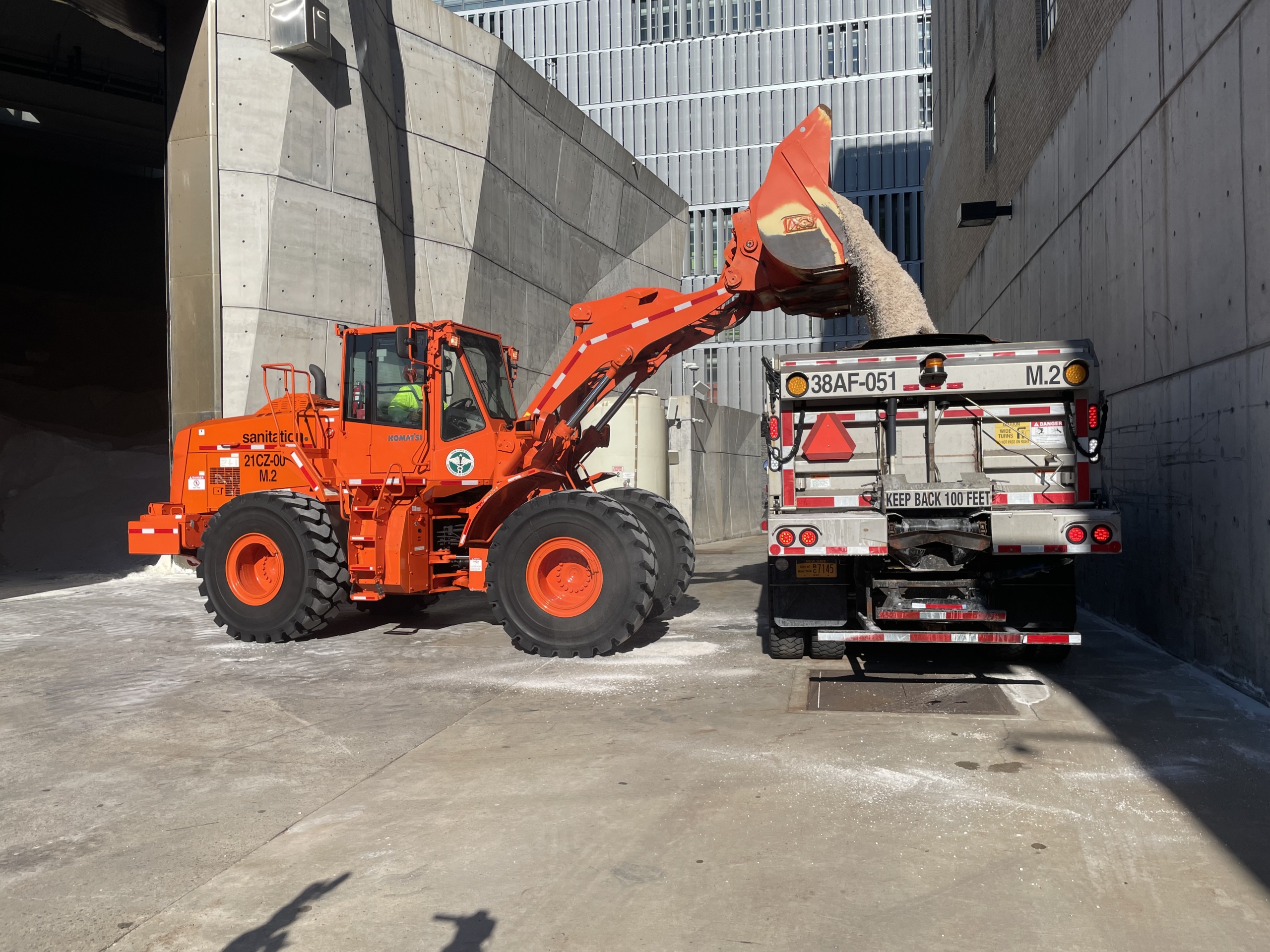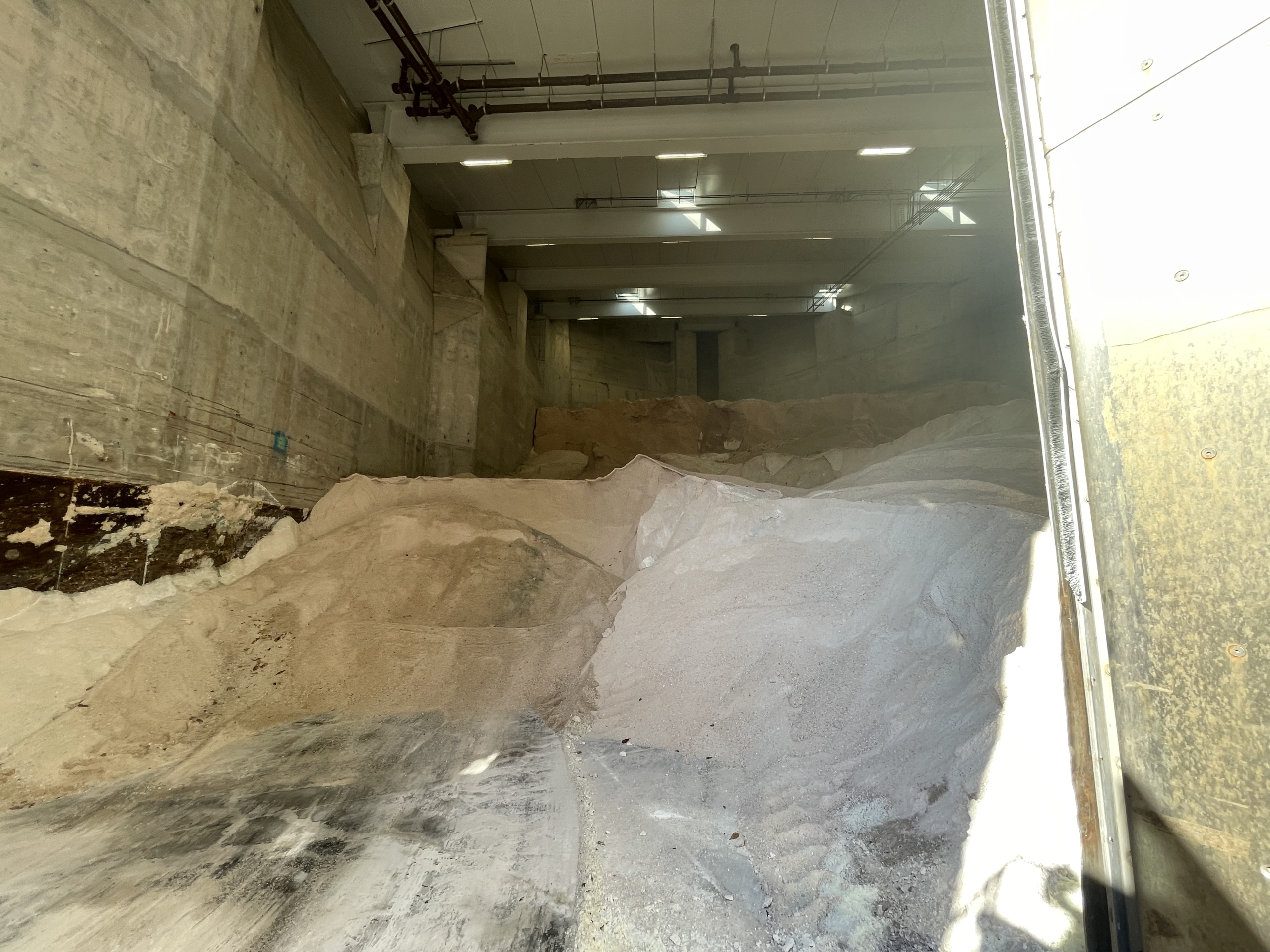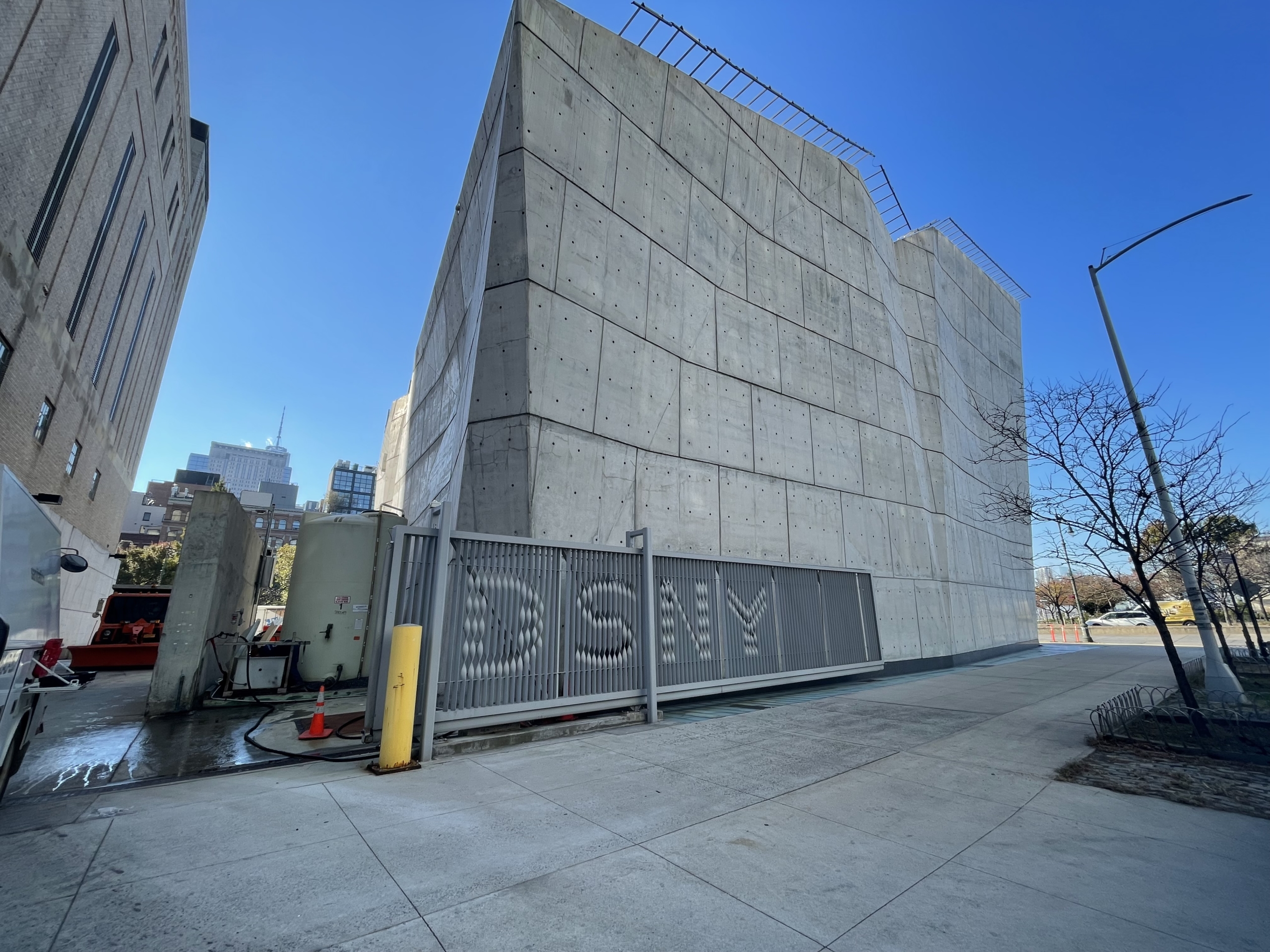
By Scott Etkin
This Thanksgiving, we can all be grateful for the New York City Department of Sanitation (DSNY). Not only do they reliably – almost magically – make our mountains of garbage disappear overnight, they also plow the streets during snowstorms.
This week DSNY Commissioner Jessica Tisch, who joined the agency in April, spoke about the city’s snow clearing operations to the media. At DSNY’s cavernous garage on Spring Street, which feels like a slightly smelly airplane hangar, Tisch showed off the trucks, plows and vats used by the “world’s most elite snow-fighting fleet,” she said.

The demonstration emphasized DSNY’s reliance on salt to mitigate snow freezing into ice. The garage is across the street from a DSNY Salt Shed, an angular, windowless storage facility that houses 10 million pounds of salt year round. Architecturally, the shed mimics an NaCl (sodium chloride) molecule seen under a microscope.
DSNY has 42 salt sheds across the city and more than 700 salt-spreading trucks. This system is the “first line of defense” in the agency’s mandate to remove snow and ice from approximately 19,000 lane-miles of roadway, Tisch said.

Salt works by dissolving into sodium and chloride ions, which break the bonds holding water molecules together. As the ions loosen hydrogen bonds, the ice melts into water. Rock salt begins to lose effectiveness at temperatures below 24 degrees Fahrenheit. Adding calcium chloride increases salt’s effectiveness at lower temperatures.
But the use of salt has come under scrutiny for its damage to the environment. Salt runoff from roads has been shown to pollute drinking water supplies, endanger wildlife in freshwater habitats, and corrode electrical equipment. (In 2020, Community Board 7 wrote a letter to DSNY voicing concerns about excessive salting.)
In 2019, DSNY began experimenting with salt brine, a salt and water mixture that’s considered less environmentally damaging. Brine was found to be “very successful in preventing ice from sticking to the roads,” Tisch said. DSNY uses it to “pre-treat” some roads ahead of storms, but brine does not work when there’s a mix of rain and snow, which is common in the city.

Another concern with salt is the harm it can cause to dogs. Salt can be hazardous when ingested and be an irritant on dogs’ paws, writes BondVet, which has locations on the UWS. Belinda Mager, Director of Digital Media & Communications at DSNY, said that DSNY only salts the roadways, not the sidewalks, which may help avoid some of this problem. Some building supers do salt the sidewalks.
DSNY is responsible for keeping the roads clear for emergency vehicles to operate, as well as public buses and other vital services. Fast clearance is, therefore, its top priority and “salt is the most effective,” Mager said.
Snowstorms come only a few times a season but the preparations go on all year. DSNY mobilizes more than 2,000 garbage trucks with plows and more than 140 workers to keep the roads safe and clear. Depending on the severity of the storm, staff can do 12-14 hour shifts, said Assistant Chief Christian Hourihan. “It’s very tough on them, but we have a dedicated workforce that rises to the challenge every year.”









“world’s most elite snow- fighting fleet,” lol they are not serious are they? Hanging a plow on the front of a garbage truck isn’t exactly ‘elite’. If you want to see ‘elite’ snow removal, take a winter trip to Montreal.
I know they have plenty of salt but dumping hundreds of pounds in one intersection doesn’t do anybody any good. Frequently the salt is deeper than the snow. Doesn’t quite meet the level of elite status.
Wait, did they really build a salt storage facility in the shape of a salt molecule? Cool!